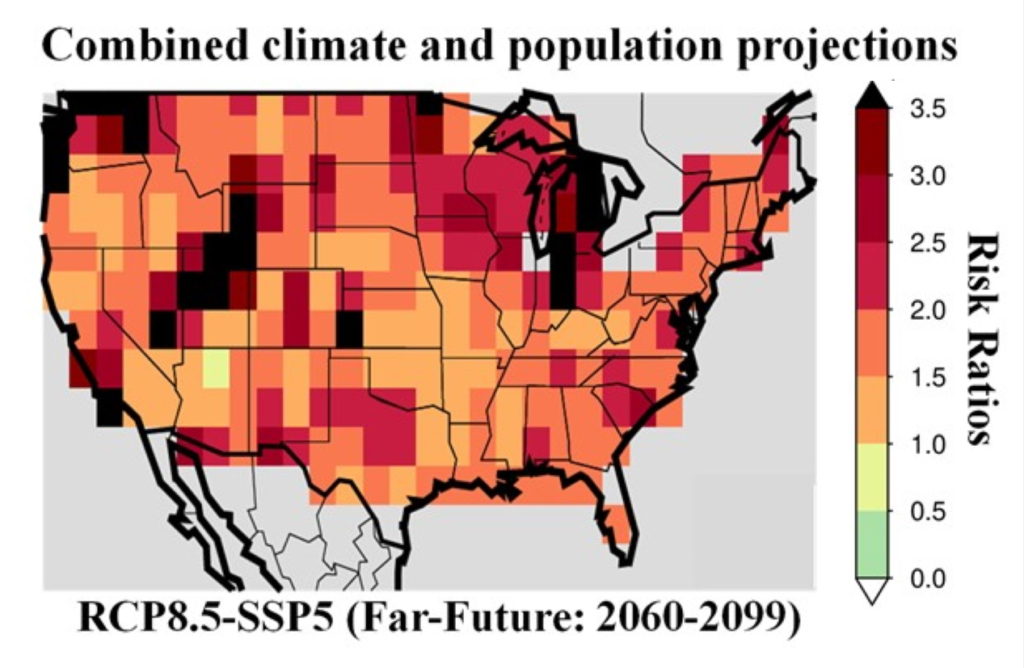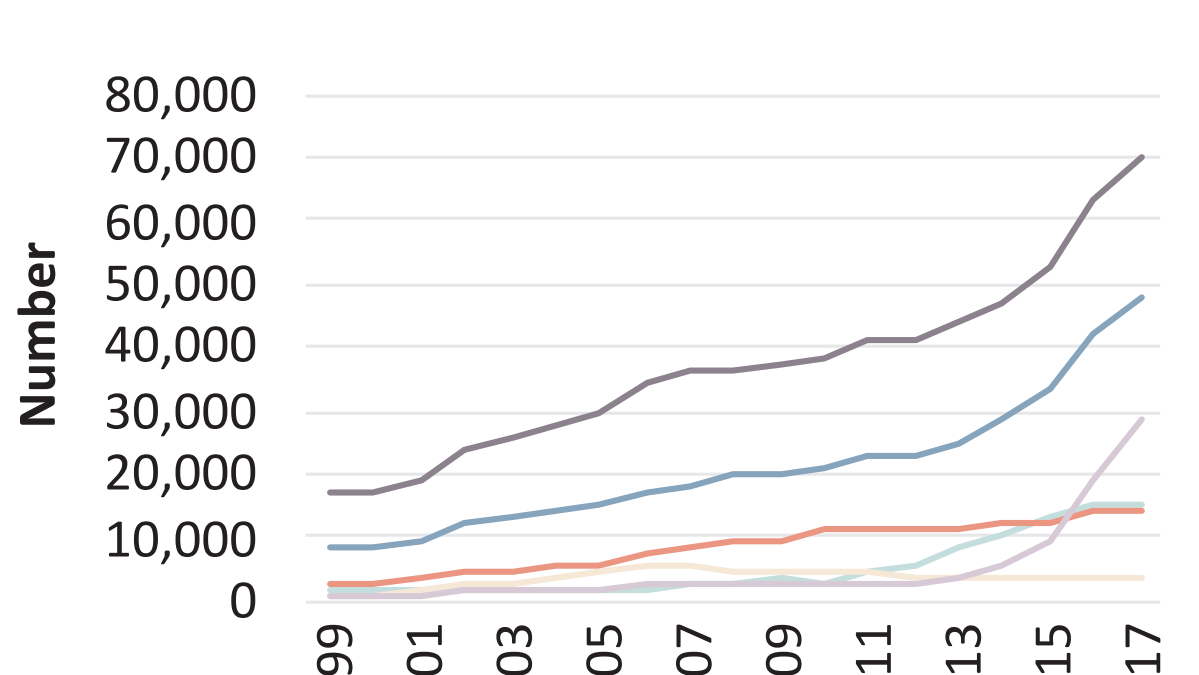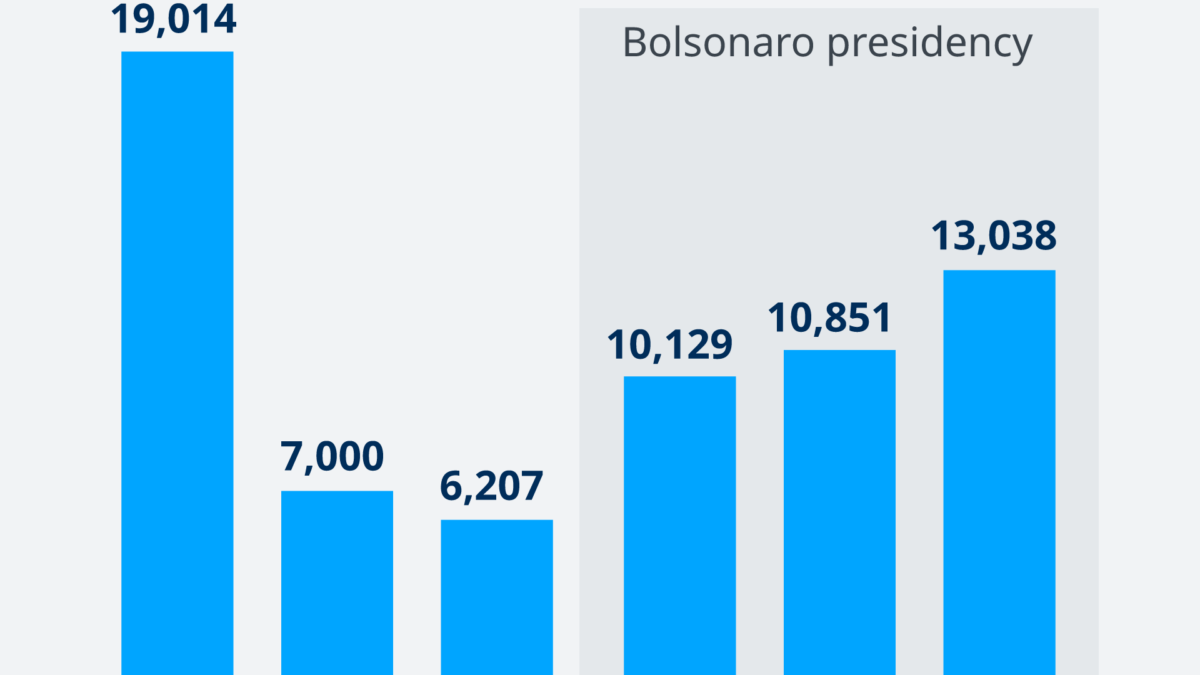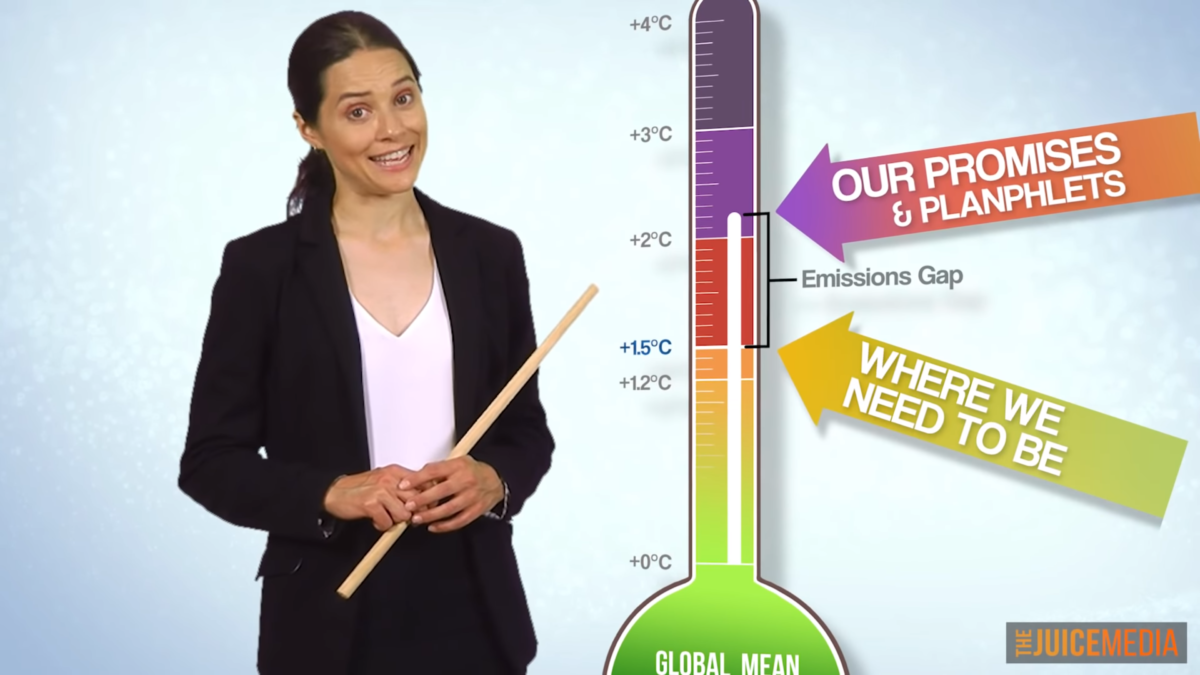Heat stress in U.S. may double by century’s end

7 June 2021 (NSF) – Periods of extremely high heat are projected to double across the lower 48 states by 2100 if the world continues to emit high levels of greenhouse gases, according to a new study in Earth’s Future, an American Geophysical Union journal.
The heat stress will be felt most strongly in areas with growing populations. The Pacific Northwest, central California, and the Great Lakes region could experience as much as a threefold increase compared to the past 40 years. Heat stress occurs when both the temperature and relative humidity get high enough that the human body can’t rid itself of the excess heat, leading to strokes, heat cramps, and other health problems.
“Without doing any mitigation strategies, the impact of heat stress is likely to increase,” said Ashok Mishra, a civil engineer at Clemson University and an author of the U.S. National Science Foundation-funded study.
Human-driven climate change is leading to an average increase in temperatures across the world. However, people don’t necessarily notice a slow, even warming as much as an extreme event.
Mishra and co-authors wanted to see how heat stress would increase at the same time as a general increase in temperature and relative humidity. They assumed that while humans may experience higher temperatures on average in many areas, people will acclimatize to the new normal, but extremely high heat index peaks, above even the yearly median values, will continue to have negative impacts on human health.
While previous research has usually examined how extreme heat events may increase in severity, frequency and duration, most studies have looked at one of these in isolation. Mishra and his colleagues calculated how all these might increase together in the future under a high emissions scenario.
Bruce Hamilton, a program director in NSF’s Directorate for Engineering, added that “the research underscores how vitally important it is to implement effective mitigation measures.”
Contact
- NSF Public Affairs, researchnews@nsf.gov
Heat stress in U.S. may double by century’s end

Anthropogenic Warming and Population Growth May Double US Heat Stress by the Late 21st Century
ABSTRACT: Globally, heat stress (HS) is nearly certain to increase rapidly over the coming decades, characterized by increased frequency, severity, and spatiotemporal extent of extreme temperature and humidity. While these characteristics have been investigated independently, a holistic analysis integrating them is potentially more informative. Using observations, climate projections from the CMIP5 model ensemble, and historical and future population estimates, we apply the IPCC risk framework to examine present and projected future potential impact (PI) of summer heat stress for the contiguous United States (CONUS) as a function of non-stationary HS characteristics and population exposure. We find that the PI of short-to-medium duration (1–7 days) HS events is likely to increase more than three-fold across densely populated regions of the U.S. including the Northeast, Southeast Piedmont, Midwest, and parts of the Desert Southwest by late this century (2060–2099) under the highest emissions scenario. The contribution from climate change alone more than doubles the impact in the coastal Pacific Northwest, central California, and the Great Lakes region, implying a substantial increase in HS risk without aggressive mitigation efforts.
Heat stress has led to massive human morbidity and mortality in recent years. Severe heat stress (HS) events in the Midwest and the Gulf of Mexico coastal plains during the summers of 2019 and 2020, as well as many others during the 2010–2019 decade, are representative of the types of extreme hot and humid events expected to become more common in the contiguous United States (CONUS) in future. The HS is expected to become more severe due to an increase in frequency, duration, severity, and spatiotemporal extent of extreme warmth and moisture, which is an important, nonlinear, and often-neglected component. While these different contributing factors are often investigated independently, we argue that a holistic analysis that integrates them is more informative from the standpoint of the potential impact of HS exposure. The HS events likely to significantly increase across densely populated regions of the Northeast, Southeast, Midwest, coastal Pacific Northwest, central California, and Great Lakes region.
Anthropogenic Warming and Population Growth May Double US Heat Stress by the Late 21st Century


